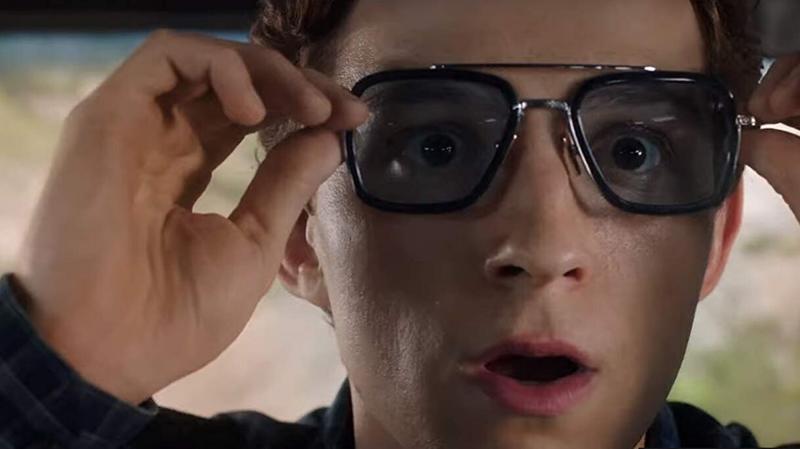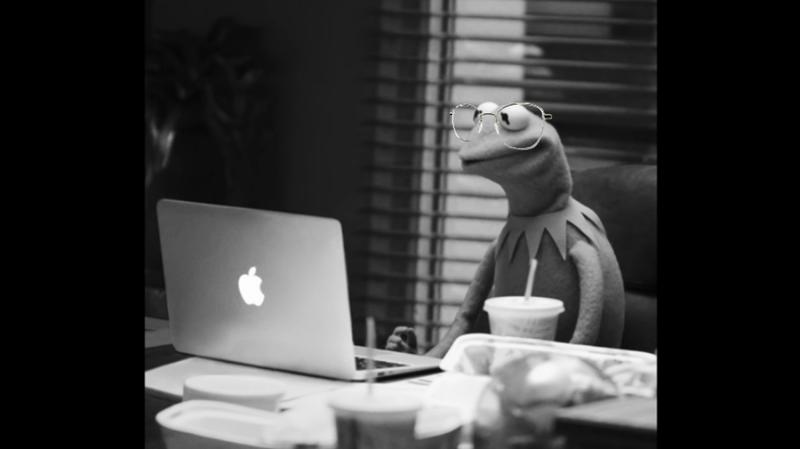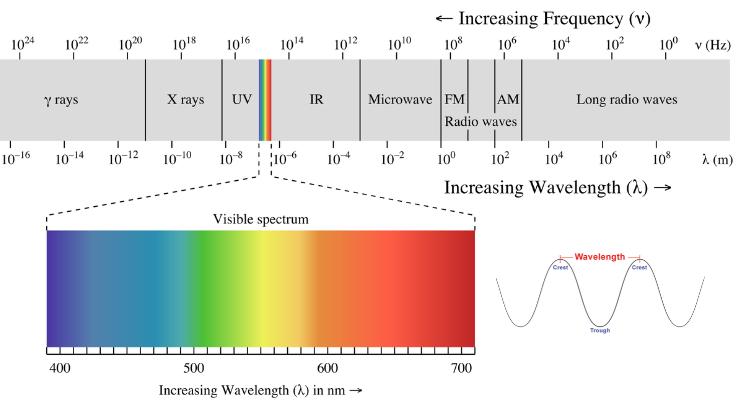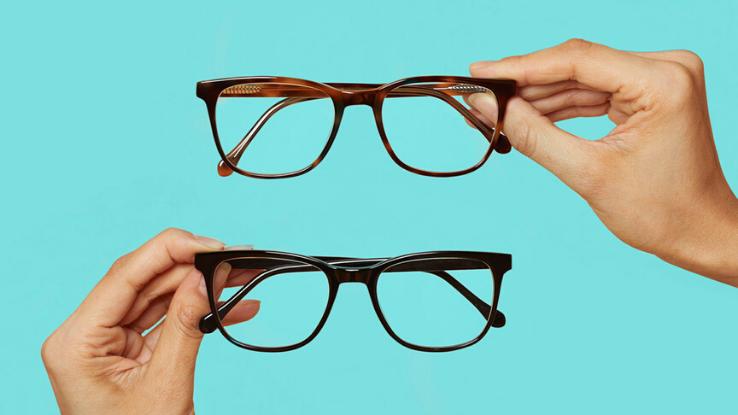How To Remove Glass Shade From Light Fixture

If you're anything like us, you're probably still spending tons of time in front end of screens due to ongoing social distancing restrictions, and your new habits may stick, fifty-fifty after the restrictions are lifted. Phones, TV screens, computers — y'all name information technology — these gadgets help us get piece of work washed and provide great ways to spend our time while we're social distancing during the COVID-nineteen pandemic, just they also expose us to a lot more blue light.
For beach-goers, experts always recommend a healthy coating of sunscreen to protect the skin from those pesky ultraviolet (UV) rays, only sunlight contains more than just damaging UV light. In fact, it's made upwardly of reddish, green, yellow, blue and orange light rays, which combine to create "white light" (a.k.a. sunlight). If you haven't sat through a high school scientific discipline course in a while, no worries. We'll break downwards the important stuff most blue light — without getting also scientific.
What Exactly Is Blueish Light?
Every bit the name suggests, visible light can be seen past the human center, and each ray reflects a item color. The color of a given ray depends on the ray's wavelength (see the graphic below) — or the altitude between successive crests of a wave. (Side note: This means that objects get their colors through the wavelengths of the lite that are reflected from them. Trust the states — don't think besides hard about information technology. Things get trippy.)

Another important human relationship to annotation is that of wavelengths and energy: The longer the distance between waves, the less energy a ray has to offer. Think of it this way — if the moving ridge crests are further apart, they're a scrap lazy, just if the crests come in rapid succession, at that place'southward a frenzy of energy there. All of this means rays on the red stop of the visible light spectrum take longer wavelengths and less energy, whereas rays on the blue end have shorter wavelengths and more than energy.
UV rays, which aren't on the visible light spectrum at all, surpass blue light in terms of how much energy they contain. That incredible corporeality of energy is how those rays are able to create a physical change, like tanning (or called-for) your peel. In moderation ultraviolet radiations can be good for us (retrieve vitamin D), simply, on the other paw, it can also produce some devastating effects (think sunburn and snow blindness).
How Does Blue Light Impact Your Health?
So, what about bluish light — the visible rays that are a few notches below harmful UV rays? Well, approximately ane-third of all visible light is considered loftier-energy visible (HEV) blue calorie-free. Blue light is literally why the sky appears bluish. These rays scatter more hands than other visible rays of low-cal when they strike the atmosphere's air and h2o molecules, and all that handful makes the sky that vibrant bluish color.

In that location's no escaping it, especially because daylight is our main source of blueish calorie-free, but it'south not all bad. Experiencing blue light during the daytime helps regulate your circadian rhythm, makes yous more alert, elevates your cerebral role, promotes expert recall and is even used in light therapy to treat seasonal affective disorder (Sad). However, human-made objects — including LED lights and display screens on flat-screen TVs, computers and smartphones — emit blueish light likewise. Although these devices only emit a fraction of the blue light the sunday emits, researchers and doctors have still voiced concerns well-nigh patients' excessive screen time — and corresponding overexposure to blue lite — in recent years.
Surprisingly, the human being eye is pretty great at protecting the retina from UV rays, only blueish light is a different story. Well-nigh all of information technology penetrates the light-sensitive retina, causing impairment that approximates macular degeneration — a status that tin lead to vision loss.
In improver to potentially harming your eyes over fourth dimension, blue calorie-free tin also atomic number 82 to eye strain. If you accept ever ended upwards with a wicked headache after staring intensely at an Excel spreadsheet for hours, you're probably familiar with that particular discomfort. When we noted how blue calorie-free contributes to the sky looking bluish, nosotros mentioned that this is truthful because of how bluish lite scatters. Well, co-ordinate to All About Vision, this same scattering of the bluish light that emanates from screens makes for "unfocused visual 'noise' [that] reduces dissimilarity and can contribute to digital eye strain."
If you don't suffer from middle strain due to increased exposure to blue light, these inescapable rays may still have adverse effects on your health. Any sort of light — regardless of where it falls on the spectrum — can suppress the human body's ability to release melatonin, the hormone that regulates sleep cycles. However, information technology's believed that blue light quashes melatonin secretion fifty-fifty more other hues exercise. Researchers at Harvard University compared the effects of bluish and greenish light exposure and plant that "blue lite suppresses melatonin [secretion] for nearly twice every bit long as the light-green calorie-free and shifted cyclic rhythms by twice equally much."
How Tin Yous Protect Confronting Blue Light?
BluTech, a company that manufactures special blue light-filtering lenses, reports that "43% of adults have a job that requires prolonged use of a tablet or reckoner" — and that's only while those adults are on the clock. Factor in all the fourth dimension nosotros spend online, texting and marathoning Netflix, and adults spend roughly 12 hours a day looking at screens and taking in blue lite. And so, how can yous personally mitigate the harmful effects of prolonged exposure to blue low-cal?

Well, blue light-filtering lenses are becoming all the rage. Although non every bit ubiquitous as Abroad suitcases or Blue Apron commercials, yous may have heard commercials for blue calorie-free-filtering specs from Felix Gray or Warby Parker on your favorite podcast or radio talk evidence. Felix Grey glasses, for case, pride themselves on having a blueish low-cal-filtering fabric embedded within, which the company says will curb eye strain, headaches and sleep disruption.
If you're not into wearing a pair of glasses, experts recommend taking screen breaks, both at work and at home; keeping screens clean to reduce glare and center strain; irresolute your annoying white display background to something less bright; blinking more oftentimes; and fugitive screens for at least 30 minutes to an hour before bed because screens stimulate your brain. At bedtime, it's time to merchandise that fancy bluish light-emitting tablet for a Kindle Paperwhite, or, you know, a good quondam-fashioned book. (Remember those?)
How To Remove Glass Shade From Light Fixture,
Source: https://www.ask.com/culture/everything-about-blue-light-glasses?utm_content=params%3Ao%3D740004%26ad%3DdirN%26qo%3DserpIndex
Posted by: holmquistproaderescid41.blogspot.com


0 Response to "How To Remove Glass Shade From Light Fixture"
Post a Comment